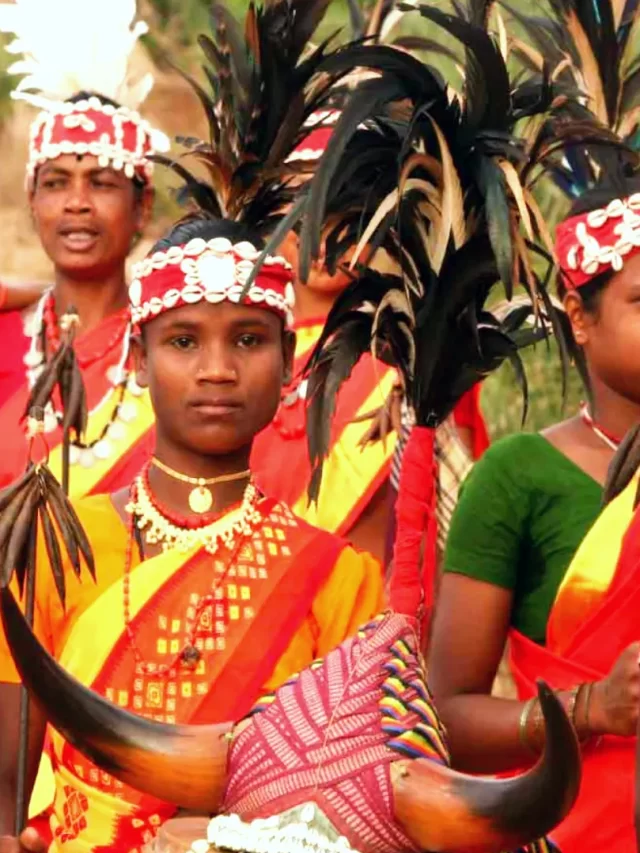Chhattisgarh, nestled in central India, boasts a rich tapestry of art forms that reflect its cultural vibrancy and deep-rooted traditions. Each art form of Chhattisgarh carries a unique narrative of the region’s history and ethos. The vibrant tribal art, such as the renowned Bastar Dhokra and bamboo craft, showcases exceptional craftsmanship and artistic finesse. With a blend of mythological themes, religious fervour, and everyday life depicted through various mediums, Chhattisgarh’s art forms not only captivate the senses but also offer a profound glimpse into its cultural heritage and diversity. Let’s take a look at a few of them.
1. Pithora Painting
Pithora paintings are an ancient folk art style that originated in Central India (now the states of Madhya Pradesh and Chhattisgarh). The name ‘Pithora’ comes from the tribal protector and local deity, ‘Baba Pithora.’ They are done on the walls and floors of homes to ward off evil spirits and bring good fortune. Their imagery is connected to rituals and special occasions like marriages and births. Horses are featured in the majority of Pithora paintings, as their sacrifice was thought to bring fortune. The paintings depict everyday life like farming and trade, nature, and the gods of the Rathwa and Bhilala tribes. The intricately detailed Pithora paintings employ natural vibrant colours of red, ochre, black, and yellow.
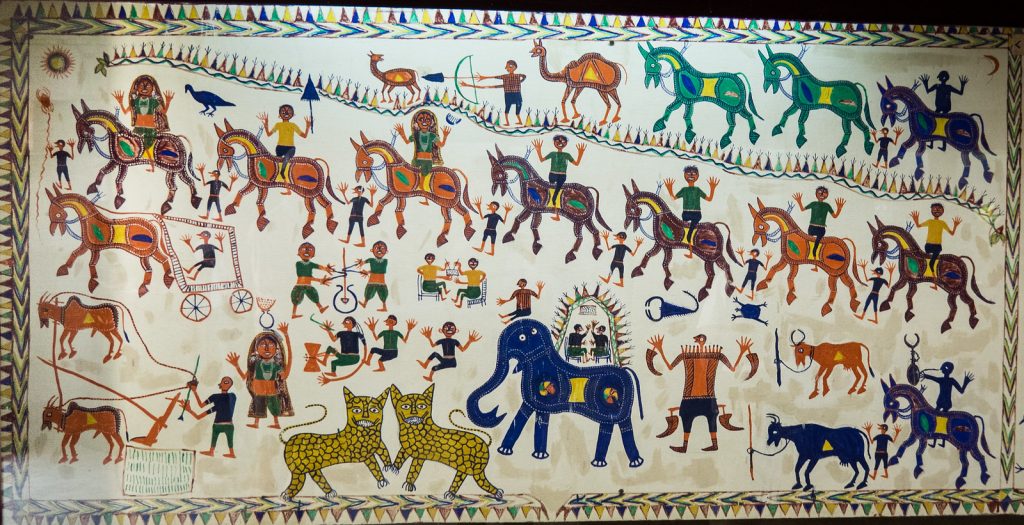
2. Godna
Godna is arguably the most innovative art form practised by the Jamgala women. The word ‘Godna,’ means ‘to tattoo by pricking.’ Using a sharp thorn or reed, the skin is carefully punctured for the Godna tattoo design, which is then covered in naturally occurring tattoo ink. The Tree of Life, Hindu gods, flora and fauna, and tribal myths are a few of the bolder and more intricate geometric patterns that are utilised in this body art. To translate the art form into textiles, natural colours are mixed with acrylic paint. The women use ‘Godna,’ or traditional tattoo motifs, to paint designs on textiles. The ‘Devar Godna’ of Rajanandagaon and the ‘Godi Godna’ of Surguja are two prominent examples of Chhattisgarh’s godna paintings.
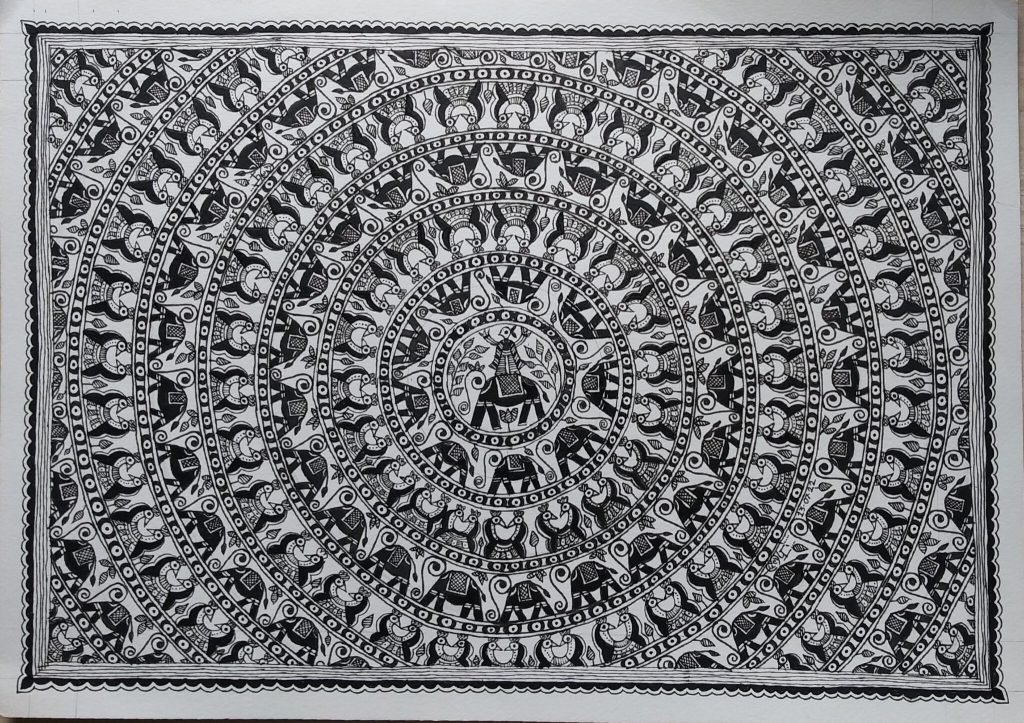
3. Bamboo Craft
Bamboo crafts and thickets are a common sight in Chhattisgarh, thanks to the craftsmanship of the tribal folks. Artisans create bamboo craft items for both decorative and everyday use. These include baskets, hunting tools, fishing nets, and agricultural implements.
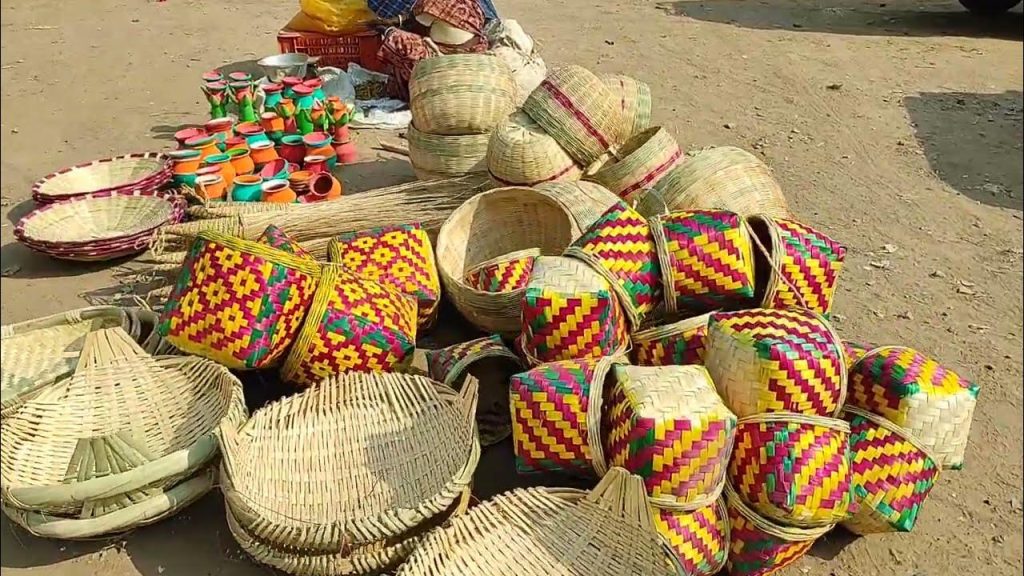
4. Wood Craft
Chhattisgarh has witnessed a deserved yet unexpected flourishing in wood crafts in recent years. The Indigenous craftspeople carve ‘shisham,’ ‘teak,’ ‘dhudi,’ ‘sal,’ and ‘kikar,’ wood to make ceilings, doors, lintels, sculptures, window frames, masks, pipes, and furniture. With the emergence of the Badhiya community, Bastar wooden craft grew exponentially. Seldom, do these wood craft takes the form of local deities.
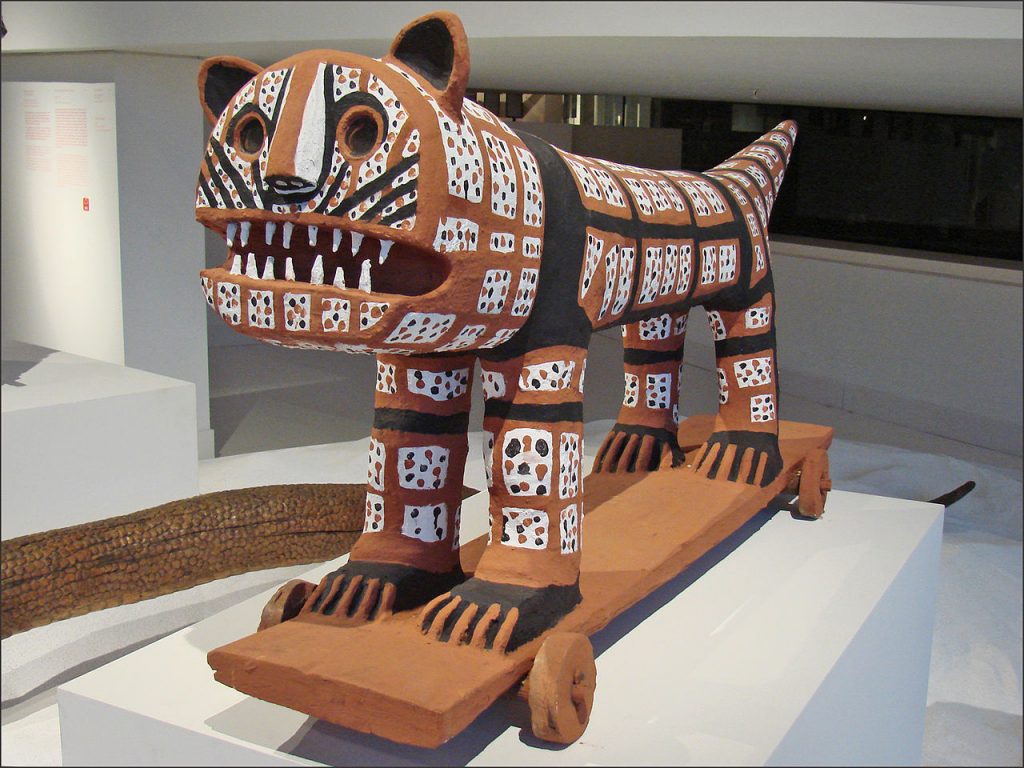
5. Kosa Silk Weaving
Chhattisgarh is the biggest producer of Kosa silk in India. Kosa silk has been produced in the Korba and Champa districts for centuries and is prized for its delicate texture, toughness, and inherent sheen. For the Kosa silk weaving, special silkworms (Antharaea mylitta) are cultivated under the Arjun, Saja, and Sal trees. The silk fibres are then extracted by boiling the cocoons. After that, these fibres are spun into thread and coloured with naturally occurring dyes (ail/aal from Bastar forest) derived from minerals and plants. Through Kosa silk weaving, numerous items such as shawls, scarves, sarees, wall hangings, handicrafts and decorative items are made. The tribespeople hand-print these textiles. Since the process of Kosa silk weaving is labour-intensive, the finished products are often expensive.
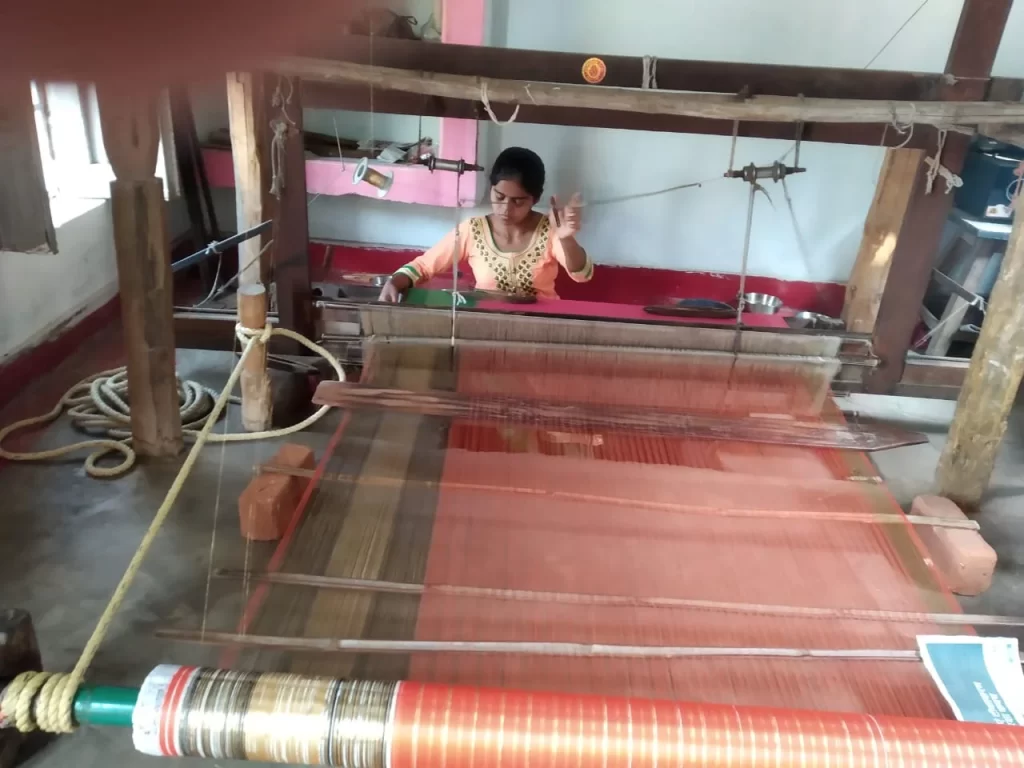
6. Dhokra Or Bell Metal
Chhattisgarh is the birthplace of the ancient metal casting technique known as Dhokra or Bell Metal art. Brass or bronze are the most popular materials which are created using the hollow casting or lost-wax casting technique. They are produced by the ‘Jharas’ of Raigarh and ‘Ghawas’ of Bastar. The most prominent and widely recognized example of Dhokra craft is the Dancing Girl exhibit at the National Museum in New Delhi. Hindu gods and goddesses, as well as folk deities, are some of the common themes used in the creation of Bastar Dhokra or bell metal figures.
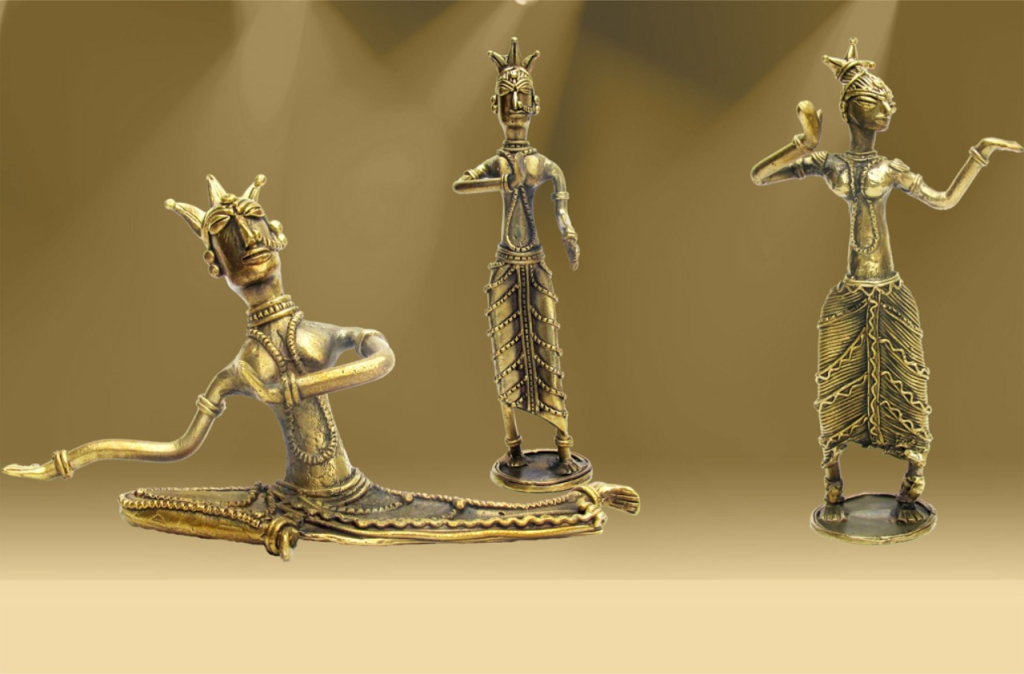
Image Courtesy – Times of India


